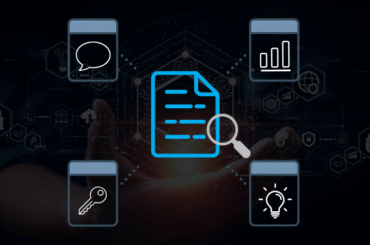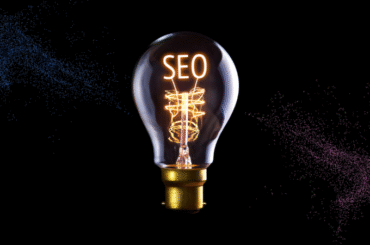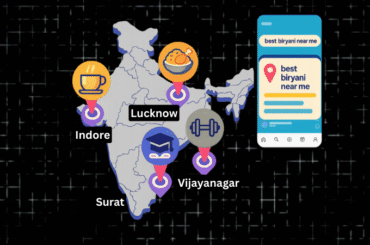Google continues to shake things up, and this time, it has done so with another spam update. On August 26th, 2025, the search giant officially started rolling out its most anticipated August 2025 Spam Update. This is something you should take seriously if you are running a website or managing SEO campaigns. As of now, the rollout has been fully completed – Google announced completion on September 22, 2025, after a 27-day cycle. This update is still rolling out and may take a few weeks to complete. Therefore, users should refer to the Google Search Status Dashboard to confirm when the update is complete.
If you are curious to know what is the Google August 2025 Spam Update, and how it will affect website owners, stay tuned and read this complete blog.
Key Highlights of the August 2025 Spam Update
| Key Points | Details |
| Launch Date | August 26th, 2025, 9:00 AM PDT |
| Scope | Global rollout, all languages and regions covered |
| Update Type | Normal spam update (not a core update) |
| Rollout Duration | Expected to take a few weeks for full impact |
| System Used | Powered by Google’s SpamBrain AI System |
| Focus Area | Filtering out manipulative tactics like keyword stuffing, link spam, and thin content |
| Possible Impact | Ranking and traffic fluctuations, especially for sites with spammy practices |
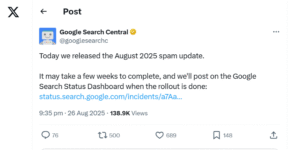
What is the Google August 2025 Spam Update?
Spam updates are far more precise and targeted than Google’s core updates. They are primarily designed to detect websites that employ manipulative tactics, such as stuffing keywords into unreadable paragraphs, concealing links, or utilizing bots.
No matter where your audience resides, be it in New Delhi, New York, or New Jersey, the same rules will apply to all, as Google’s August 2025 Spam Update is a global update. If your site delivers real value to visitors, you will not only survive but also stand out, as weaker competitors will be filtered out, all thanks to this latest spam update!
Why Does Google Release Spam Updates?
Google has repeatedly said that its mission is to make the world’s information “universally accessible and useful”. Hence, with this spam update, it aims to remove all those spammy pages that hinder its mission. They not only waste users’ time but also erode trust in search results. SpamBrain empowers this update; this AI-powered spam-fighting system from Google can quickly recognize spammy patterns that humans might miss.
This is how it works by detecting:
- Link networks created only to manipulate authority.
- Pages with keyword stuffing just to rank.
- Entire sites filled with shallow and auto-generated text.
- Redirects that trick users into landing somewhere else.
By simply detecting and throwing out such patterns, Google will now make room for valuable content that people actually want to find.
What Website Owners Can Expect After the August 2025 Spam Update?
So, what should you expect from this latest August 2025 Spam Update if you are a website owner or manager?
This is what the next few weeks may look like for your website:
- Ranking May Bounce: Sudden drops or spikes, which are normal during any such update rollout.
- Traffic Might Wobble: The Analytics dashboard may appear messy and complicated to navigate for a while.
- Gradual Effects: Some websites may not display any changes for days, but the effects will gradually become apparent.
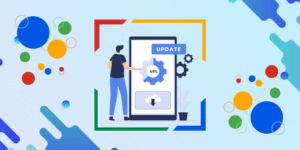
What You Should Do Right Now After the Spam Update?
Trust us, the best way to deal with this latest Google August 2025 Spam Update is by not overreacting! Instead, you must put focus on strengthening your website’s fundamentals.
Best Way to Deal with this spam update:
- Audit Your Content: Self-check whether the content provided on your website is really answering the fundamental questions that the visitor might be looking for, or is it just stuffed with keywords?
- Use Search Console: Track clicks, impressions, and keyword positioning.
- Review Backlinks: Remove low-quality links that appear manipulative.
- Watch for Patterns: Focus on category-level performance rather than paying attention to a single blog post.
- Be Patient: Do not panic; wait until the rollout is complete before making any sweeping changes.
Who Will Be Most Affected by the August 2025 Spam Update?
This update won’t shake up every website. The ones that usually get hit are those that depend on shortcuts instead of real value.
Common websites or blogs that will get impacted:
- Blogs stuffed with the same keywords over and over.
- Affiliate sites with copy-pasted or shallow product reviews.
- Link networks created just to pass authority.
- Auto-generated pages with no or little value to the reader.
- Sites that trick users with misleading redirects.
On the flip side, if your site regularly publishes useful, original content, this update could actually work in your favor. As low-quality competitors slip, genuine websites are more likely to stand out.
Why Google’s August 2025 Spam Update Matters?
By rolling out such spam updates, Google reminds us that SEO is a long game, and no shortcuts can help you deliver quick results.
Google’s aim with the August 2025 Spam Update:
- Quality beats gimmicks
- Authenticity beats automation
- User–first content beats manipulative tricks
The Bottom Line: When low-value pages are removed, higher-quality sites naturally rise in rank. For brands that have invested in trust, transparency, and good content, this is a win.
What we’ve learned so far post-rollout
1. Completion & Duration:
The update, which began on August 26, 2025, officially wrapped up on September 22, 2025 – a 27-day rollout period.
2. Scope & Focus:
It was a broad spam update (not just a link spam update). It did not explicitly target link spam or site reputation abuse policies in the core but instead targeted a broader suite of spam violations.
3. Tool & Reporting Disruption:
Many SEO toolkits and platforms struggled to accurately reflect the changes during and after rollout. The “num parameter” support was dropped by Google, which affected how many results third-party tools could scrape, leading to impression declines and reporting discrepancies in Search Console.
4. Fluctuation Patterns:
The update’s impact was not linear – after an initial strong impact, things cooled down, but around September 9 the spam signals “heated up” again, causing renewed volatility in rankings and indexing.
5. Recovery & Refreshes:
Google has indicated that recovery from any spam hit may take several months, and periodic refreshes of the spam algorithm may occur.
6. What This Means for You:
If your site saw ranking drops or traffic fluctuations, aligning fully with Google’s spam policies is crucial. Monitor category-level signals (not just individual pages) and give time – abrupt changes too early may backfire. Emerging signals from tool data may be noisy, so use multiple sources cautiously.
How Straction Consulting Can Help You Stay Ahead?
Now that the rollout has officially concluded, it’s clear this algorithm change was wide in scope and disruptive in effect. Sites relying on manipulative techniques are more vulnerable than ever.
Don’t rush into major overhauls immediately; allow sufficient time for stabilization and recovery. Focus on aligning with Google’s spam policies, doing deep audits of backlinks and thin content, and tracking performance at an aggregate level. With the possibility of future refreshes, maintaining a solid foundation is your best defense.
Here is what you can achieve by partnering with Straction Consulting:
- Update Experts: At Straction, we track every algorithm change to help you adapt quickly.
- Quality-First SEO: We don’t believe in shortcuts; just proven strategies that align with Google’s vision.
- Data-Driven Monitoring: From Search Console to competitor tracking, we keep you informed at every step.
- Future-Proof Growth: Straction utilizes robust SEO foundations that safeguard your site against future updates.
With Straction Consulting, you don’t just survive Google’s updates; you grow through them.



